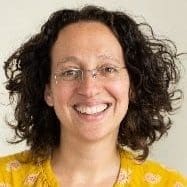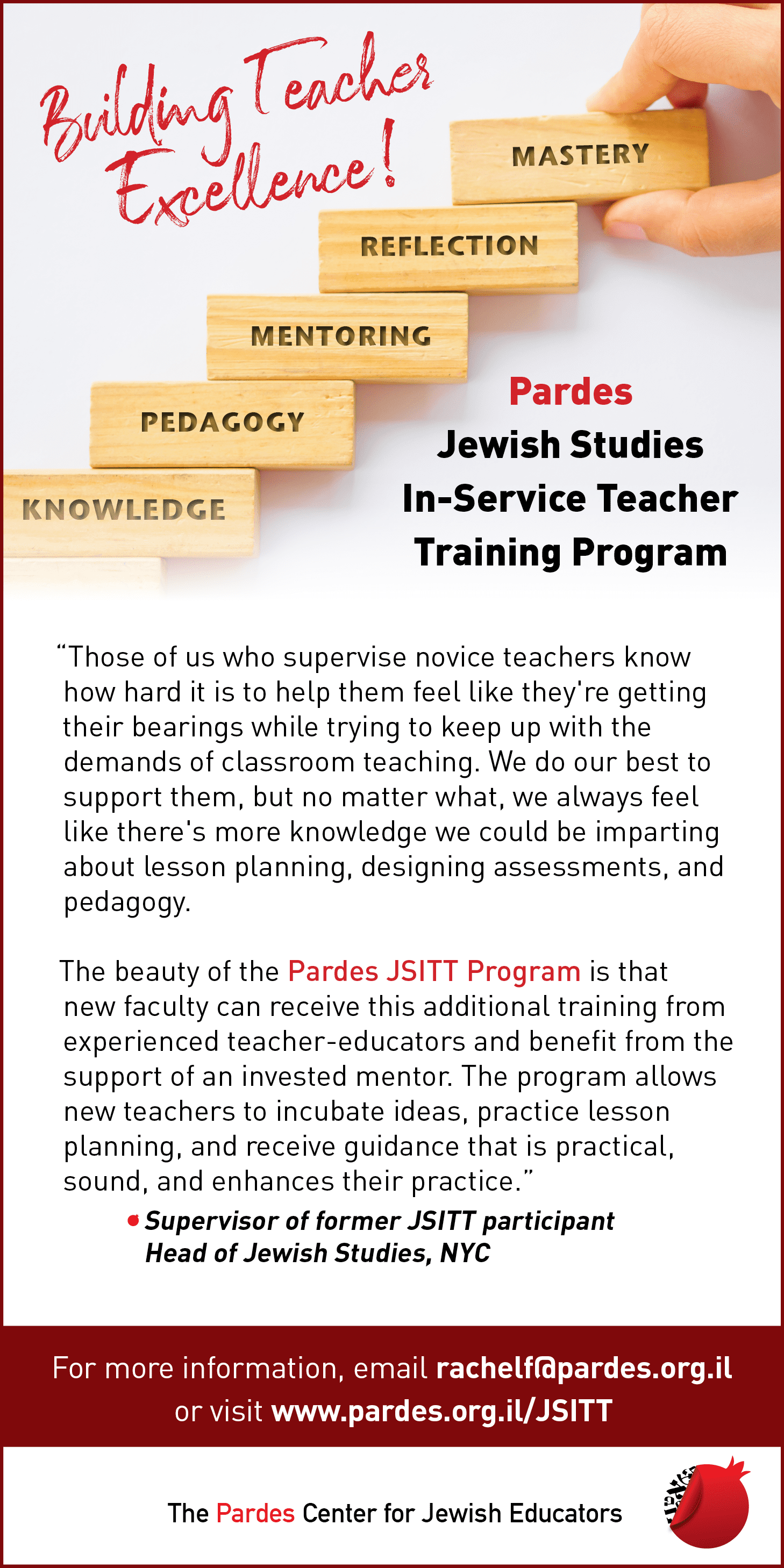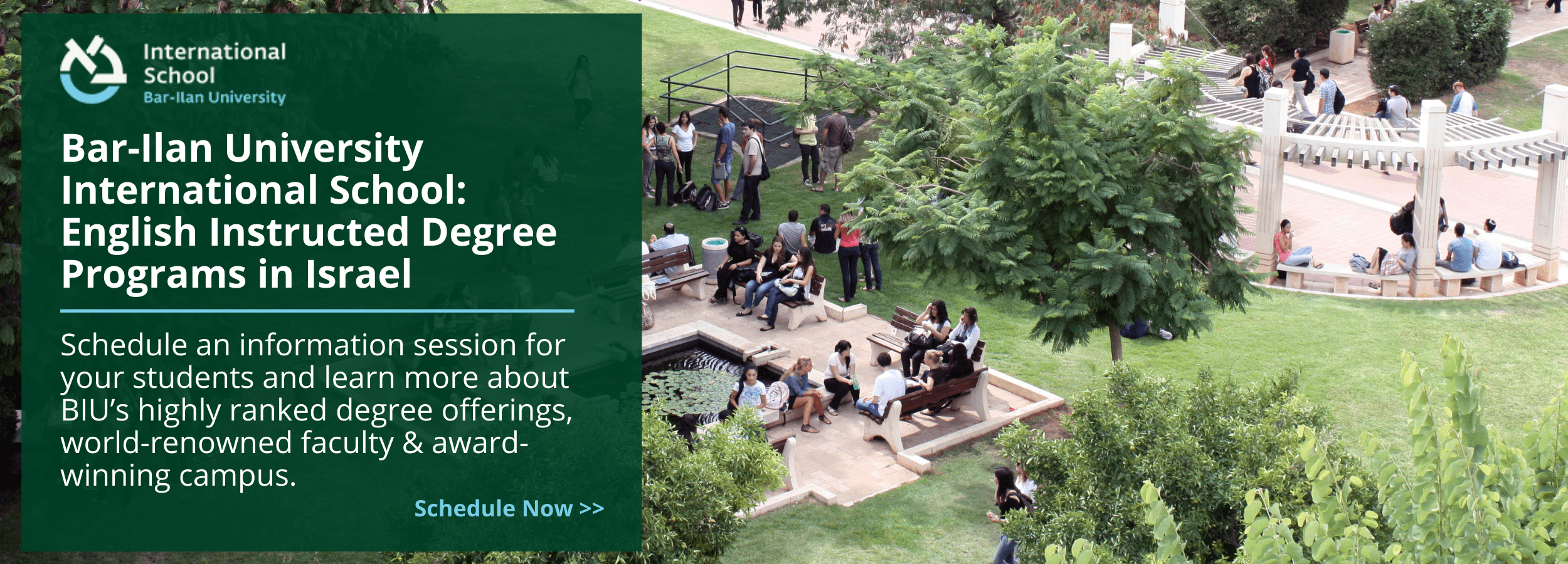Netanel Burstin introduced his high school students in Zikhron Ya’akov to a photograph of the Jewish celebrations in Rome when the State of Israel was established. Although he had carefully analyzed the photograph before the lesson, a student surprised him by pointing out one detail he had neglected. Among the crowd gathering at the Arch of Titus was a woman holding a baby in the air and staring towards the camera. This woman was sending a message, and Netanel’s student heard it. Although this was only a minor detail, it added a completely new level of meaning to the lesson. This anecdote illustrates how the introduction of primary sources can be a very powerful experience as they offer an authentic glimpse into the lives and thoughts of individuals from the past. By concentrating on just one woman in the photograph, that student found a personal and emotional connection to the event. In a split second, an historical event turned into a personal story.
Meaningful learning is defined by being truly relevant and resonant, to the degree that the learner feels something—a sense of discovery or a spark of connection—and is compelled to change their point of view or even their behavior as a result. The educator’s role is to facilitate an engaging process that can lead to such inspiration, whereby study becomes a vehicle of exploring and developing one’s identity.
As Jewish educators, we want our learners to ask themselves what resonates with them as individuals and how it contributes to their understanding of their roots and heritage. We want them to discover how their learning empowers them to reflect on their role in their community and the Jewish people at large and encourages them to be proactive in forming the future of their culture.
As stated in the Talmud (Avodah Zara 19a): “A person can learn only from a place that their heart desires,” and so we usually attempt to spark a personal connection at the outset in order to motivate the students to begin the learning process, often perceived by them as a burden. Once the learners are attentive and curious, their inner motivation and interest will carry them through the process towards meaning-making. Then, they can dig deeper and find even more meaning and significance in what they learn. However, when teaching about Jewish history and culture, we recognize the need to equip students with a certain foundation of knowledge and skills in order to kindle that spark which will then enable them to find a deeper personal connection to a topic or text.
Based on my work as the Diaspora Education Manager at The National Library of Israel, I would like to suggest framing meaning-making as an attempt to strike a balance between the learner’s current interest or passion and the longer process of digging deeper and discovering new ideas. When thinking of meaning-making this way and trying to pin-point when and how it happens, it can be helpful to see it as an ongoing process of growth embedded in identity formation, and to consider the following stipulations:
Connection
For the learner to experience meaningful learning the most basic condition is connecting (emotionally or intellectually). Sometimes a topic naturally stirs emotions or catches the learner’s attention, but connecting can also be achieved by honing an interest the learner already has, which becomes the portal for further learning. For example, as part of our program “Young Curators,” a group of students who were athletes chose to research the topic of women in sports throughout modern Jewish history. Their initial interest in sports served as a portal to deepening and broadening their knowledge about this interesting chapter in Jewish history.
Choice
Since the meaning-making process happens inside the learners’ minds (or hearts), it is essential to enable choice and empower students to take responsibility and ownership throughout the process of inquiry. The starting point of any research project we offer students is the task of choosing a topic, and it is important that they decide what they want to learn about. This way their preferences and interests inform the entire project. Then, the true significance of learning becomes not only what new knowledge they have gained or skills they have mastered, but also how they have channeled what was offered to them in the best way in order to create a meaningful and engaging experience for themselves.
Co-Learning
An important aspect of connecting and meaning-making in the context of Jewish education is hevruta. Learning together with others is a powerful outlet but its results can vary: it may maximize each participant’s abilities, it can lead to a rich and meaningful experience with many voices and opinions, but it can also cause disruptions and bring frustration when the students are not on the same page. Practicing and improving the skill of learning with others is an educational endeavor in and of itself, as it includes listening and sharing in a respectful and constructive way, something that is not always so easy or natural. As educators, we need to direct and support our students in the process. At times, it seems more efficient and accurate to have students do individual work, which is also easier to assess and grade. However, from our experience, working in a group in which everyone can participate and contribute their own strengths is a component of meaningful education. Group work encourages students to look outside themselves and their own worldview and be attentive to the thoughts and needs of others. Oftentimes the back and forth of conversation between students sparks the process of finding meaning and relevance. In some cases, we witness a shift in an individual learner as a result of working together with others to solve a problem or create a project. Co-learning can become an outlet for self-discovery, getting to know your own strengths and challenges.
Context
Making meaning is also about making sense of something. When learning history, students might have trouble understanding the timeline and the context in which certain events took place, and they naturally judge the situation through the lens of their own lives. As mentioned earlier, the personal prism is indeed valuable in forging a connection to the material, but it is also important to take a step back and not impose our views and assumptions in order to really learn something new about the past. This can be achieved through interdisciplinary learning, which gives the learner a broader view of the cultural context. Using this method highly depends on skill levels but presenting a variety of sources allows for different students to discover deeper meaning. Maybe a long text is discouraging for some, and they are drawn to the visual sources such as manuscripts, posters, and photographs, which are a valuable and interesting way to learn about the past. Interdisciplinary learning also lends itself to appreciating how art and music play a major part in reflecting and creating history. This recognition can in turn infuse current cultural trends with new meaning for the learners, who might become more attentive to present-day events by looking at them through an historian’s lens.
Challenge
Sometimes, in order to generate that sense of meaning and enlightenment for our learners, we need to help them question their assumptions and stretch their comfort zones. Inquiry is a process that entails enthusiasm, as well as hard work and diligence, but in turn can also generate and reinforce these traits. Due to the Covid-19 outbreak, we developed a new style of online activities for Israeli high-school students who were looking for stimulation during lockdowns. During the week of Pesah, for example, they joined a designated WhatsApp group where they received daily prompts and links to various riddles and assignments that all combined into a large-scale, week-long, breakout room style activity. The content was not related to school curriculum, but rather challenged them to dig deep into ancient maps or the life story of historical figures they probably never heard about earlier. We saw that for some learners it was precisely this endeavor that motivated them to delve into meaningful learning, which resulted in a sense of accomplishment and pride upon completion of the entire activity.
Creating
The creative element of our “Young Curators” program speaks to students who learn by doing. For example, when students had to create the scenery for their video based on the Warsaw Ghetto, they had to learn how the partisans dressed and how the ghetto looked before they could create it so that it would look authentic. Furthermore, the creative product can be seen not only as an expression of the learning process, but also as a part of it, as it involves learning new information, synthesizing data, and constructing it into a comprehensive product. The mere framing and presenting of the material to others in an accessible and clear way is actually a form of teaching, which is what makes the learning process meaningful. As we all know from experience, it is only when you need to teach others that you feel you have really mastered the material, and framing it for someone else helps us make sense of it on a new level.
As the library of the Jewish people, the NLI strives to connect learners around the globe to their heritage and culture, as well as empower them to take an active role in the continued writing of our shared story. As educators, our challenge often lies in helping learners see how knowing more about their history and culture can impact their identity in a meaningful way and empower them, “from a place that their heart desires.” This educational endeavor, in the words of our mission statement, entails balancing between curating the past and creating the future.

Shuvi Hoffman
Shuvi Hoffman, Diaspora Education Manager at National Library of Israel, earned her BA in Jewish studies and her MA in Biblical studies at Hebrew University. She has taught Tanakh, Jewish philosophy, and Hebrew, written Jewish studies curricula, and worked as a teacher mentor.



